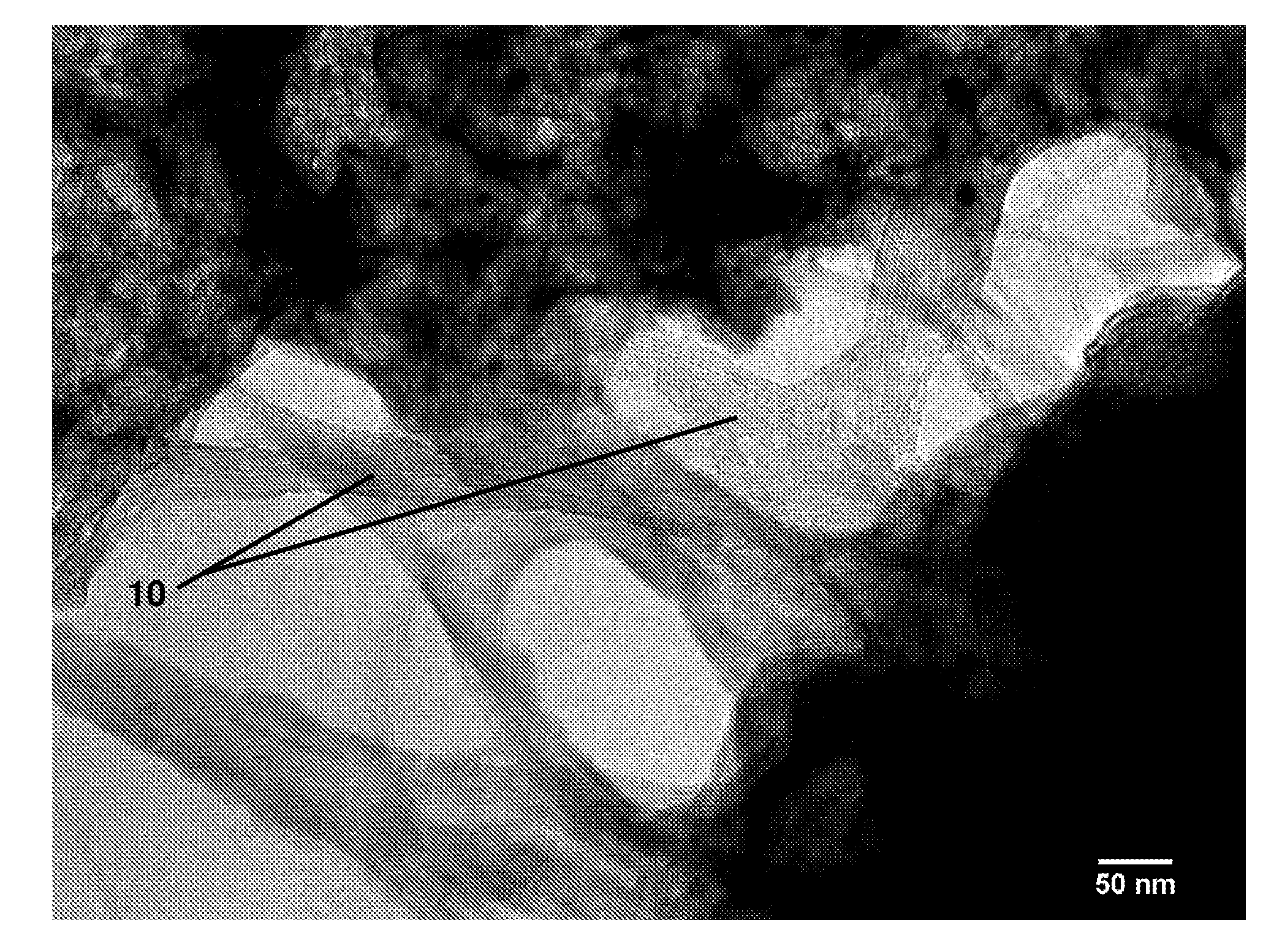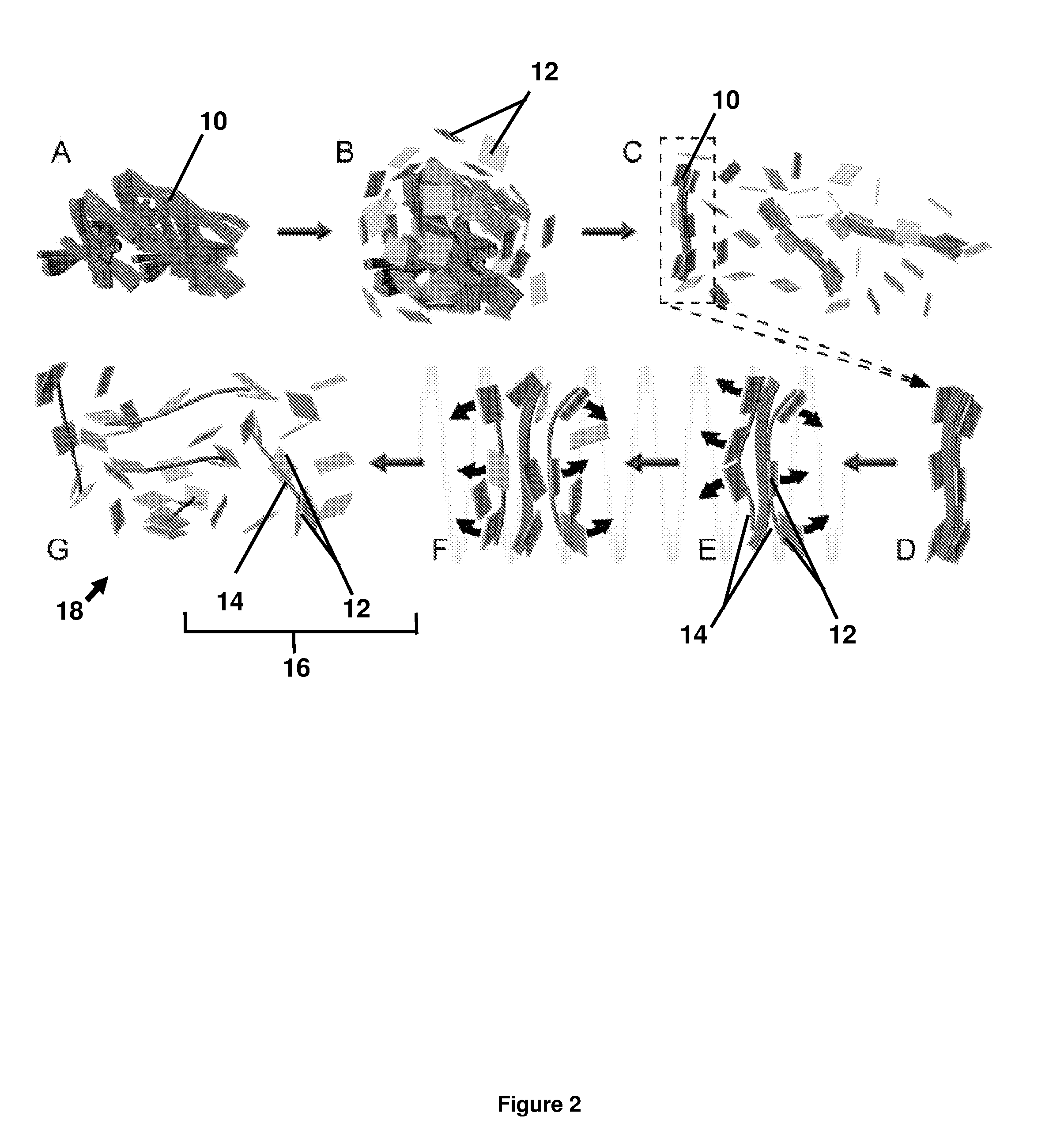Dispersion, alignment and deposition of nanotubes
a technology of nanotubes and nanotube bundles, which is applied in the field of nanotube manipulation, can solve the problems of inability to achieve the expected advantageous properties of aggregated nanotube bundles, inability to achieve homogeneous incorporation of nanotubes in compositions, and inability to fabricate polymer nanocomposites and microelectronics with nanotubes. achieve the effect of preventing nanotube aggregation
- Summary
- Abstract
- Description
- Claims
- Application Information
AI Technical Summary
Problems solved by technology
Method used
Image
Examples
example
Materials and Methods
[0083]The ZrP nanoplatelets herein described were synthesized according to the following protocol:
Approach I (Refluxing Method).
[0084]A sample of 10.0 g ZrOCl2·8H2O was refluxed with 100.0 mL 3.0 / 6.0 / 9.0 / 12.0 M H3PO4 in a Pyrex glass flask at 100° C. for 24 hr. The final products were identified as ZrP(3M), ZrP(6M), ZrP(9M), and ZrP(12M), respectively. After the reaction, the products were washed and collected by centrifugation three times. Then, the ZrP was dried at 65° C. for 24 hr. The dried ZrP was ground with a mortar and pestle into fine powders.
Approach II (hydrothermal method).
[0085]A sample of 4.0 g ZrOCl2.8H2O was mixed with 40.0 mL 3.0 / 6.0 / 9.0 / 12.0 M H3PO4 and sealed into a Teflon-lined pressure vessel and heated at 200° C. for 5 hr and 24 hr, respectively. The final products were identified as ZrP(3M-200C-5h), ZrP(6M-200C-5h), ZrP(9M-200C-5h), ZrP(12M-200C-5h), and ZrP(3M-200C-24h), ZrP(6M-200C-24h), ZrP(9M-200C-24h), ZrP (12M-200C-24h), respectively...
PUM
| Property | Measurement | Unit |
|---|---|---|
| aspect ratio | aaaaa | aaaaa |
| mass ratio | aaaaa | aaaaa |
| mass ratio | aaaaa | aaaaa |
Abstract
Description
Claims
Application Information
 Login to View More
Login to View More - R&D
- Intellectual Property
- Life Sciences
- Materials
- Tech Scout
- Unparalleled Data Quality
- Higher Quality Content
- 60% Fewer Hallucinations
Browse by: Latest US Patents, China's latest patents, Technical Efficacy Thesaurus, Application Domain, Technology Topic, Popular Technical Reports.
© 2025 PatSnap. All rights reserved.Legal|Privacy policy|Modern Slavery Act Transparency Statement|Sitemap|About US| Contact US: help@patsnap.com



